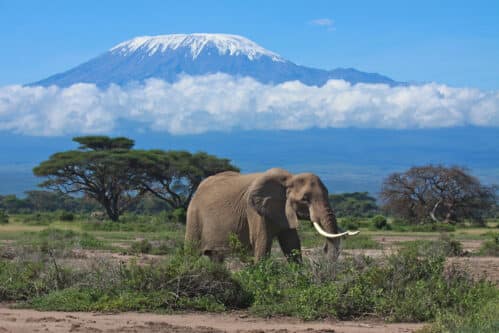
Climbing Mount Kilimanjaro is an incredible experience, and a dream come true for many adventurers. But before you take on the challenge of this majestic mountain, it’s important to be aware of the dangers posed by altitude sickness. Altitude sickness can occur when people travel quickly to high altitudes without giving their bodies time to adjust to the lower levels of oxygen in the air at higher elevations. While most cases are mild and treatable with rest and hydration, some cases can become severe if left untreated. In order to have a safe and enjoyable climb up Kilimanjaro, here’s what you need to know about altitude sickness on your journey up Africa’s highest peak!
Altitude sickness has three main forms: acute mountain sickness (AMS), high-altitude pulmonary edema (HAPE), and high-altitude cerebral edema (HACE). The first type, AMS, is the most common and affects up to 50% of people who ascend quickly above 8,000 feet. Symptoms can include headache, nausea, dizziness, loss of appetite, difficulty sleeping, and fatigue. To prevent AMS, it is important to ascend gradually and give your body time to acclimate to the altitude. It’s also recommended that you drink plenty of water and eat high-calorie foods during your climb.
HAPE and HACE are more serious forms of altitude sickness. HAPE is a buildup of fluid in the lungs and can cause difficulty breathing, chest tightness, coughing up frothy sputum, and extreme fatigue. HACE is a swelling of the brain that can lead to confusion, loss of coordination, and potentially coma or death. These two forms are much less common than AMS but can be deadly if not treated immediately. To reduce your risk of developing either HAPE or HACE, it is imperative that you ascend gradually and take breaks for rest when needed.
If you have any symptoms of altitude sickness on your way up Kilimanjaro, it is important to stop immediately and descend if possible. Do not wait until the symptoms become severe before seeking help–the sooner you take action, the better. If you are in a group, make sure there is someone trained in first aid and that everyone has access to an oxygen supply. Do not attempt to climb higher until your symptoms have improved or disappeared completely.
By keeping these tips in mind and giving yourself time to adjust to the altitude, you can reduce your risk of developing altitude sickness while climbing Kilimanjaro. Being aware of the possible dangers and having a plan in place is key to ensuring a safe and successful adventure!
Suit up for success and make sure that you’re aware of the potential dangers posed by altitude sickness on your way to the summit! With these tips in mind, you’ll be sure to have a safe and unforgettable experience. Good luck!
